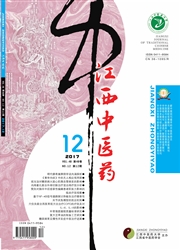

 中文摘要:
中文摘要:
目的研究三七总皂苷(PNS)微丸的成型性与物料粉体、软材性质的相关性。方法 PNS粉体与不同比例的微晶纤维素、乳糖、淀粉混合,采用挤出滚圆法制备微丸;以90%累积平均粒径、密度、压缩度、豪森比、比表面积、孔隙率、吸湿性、临界相对湿度、休止角等指标表征混合粉的粉体学性质;以液固比、塑性指数、液点、塑点、稠度等表征软材的性质,以Feret粒径、横纵比、得率、密度、脆碎度及溶出度等指标评价微丸的成型性;采用聚类分析、主成分分析及偏最小二乘回归法分析原料性质与微丸成型性的相关性。结果 PNS微丸的性质与其粉体性质无直接相关性;软材的液固比、液点、塑点等性质与粉体的孔隙率呈正相关,与粉体的密度、临界相对湿度扩散速率呈负相关;微丸密度与软材含水量呈正相关;微丸的溶出速率与粉体的孔隙率呈正相关,与吸附速率常数呈负相关。结论挤出滚圆法制备PNS微丸的成型性与原料物性有一定相关性。
 英文摘要:
英文摘要:
Objective To investigate the correlations between raw material powders, wetting mass and the formability of Panax notoginseng saponins(PNS) pellets. Methods PNS powder mixed with different proportions of microcrystalline cellulose(MCC), lactose, and starch were made into the pellets by extrusion-spheronization. Particle size, span, density, compressibility, Hausner ratio, specific surface area, pore volume, hygroscopicity, critical relative moisture, and angle of repose were used to evaluate the properties of mixing powders. Liquid solid ratio, plasticity index, liquid point, plastic point, and consistence were used to evaluate the properties of wetting mass. Feret diameter, aspect ratio, yield, density, and friability were used to evaluate the properties of the PNS Pellets. The correlations between the raw materials and the formability of their pellets were analyzed by cluster analysis, principal component analysis, and partial least squares regression analysis. Results The properties of PNS pellets had no direct correlation with the properties of material powders; The liquid solid ratio, liquid points were positively correlated with the pore volume of powders and were negatively correlated with density, diffusion rate, and span of material powders; The density of the pellets was positively correlated with water content of wetting mass; The dissolution rate was positively correlated with PV and was negatively correlated with the constant ka. Conclusion There are certain correlations between the formability of PNS Pellets and the physical properties of raw materials.
 同期刊论文项目
同期刊论文项目
 同项目期刊论文
同项目期刊论文
 Mechanistic basis for the role of binary mixtures flowability and related factors in the processabil
Mechanistic basis for the role of binary mixtures flowability and related factors in the processabil Role of main physical properties in granule yield of Andrographis extract mixtures in the high shear
Role of main physical properties in granule yield of Andrographis extract mixtures in the high shear Mechaanistic basis for the role of binary mixtures flowability and related factors in the processabi
Mechaanistic basis for the role of binary mixtures flowability and related factors in the processabi Multivariate analysis approach for correlations between material properties and tablet tensile stren
Multivariate analysis approach for correlations between material properties and tablet tensile stren 期刊信息
期刊信息
